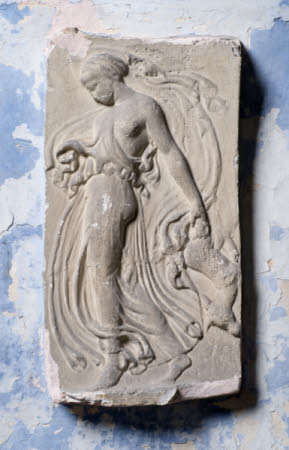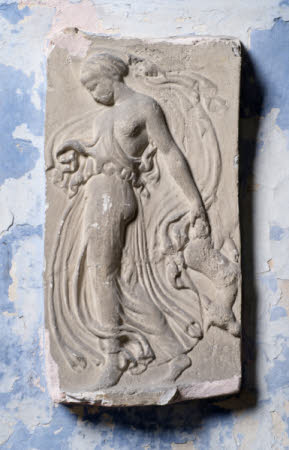Plaster cast of a Maenad sacrificing a deer
Category
Art / Sculpture
Date
1800 - 1825
Materials
Plaster
Measurements
430 x 230 x 50 mm
Order this imageCollection
Knole, Kent
NT 128676
Summary
Plaster copy of a sculpture relief depicting a Maenad by the Greek sculptor Callimachus, who worked in the second half of the fifth century BC.
Full description
It is part of a series of six dancing maenads (followers of the god Bacchus) depicted on a monument to Dionysus in Athens (406 BC). The monument was erected in honour of Euripides' play "The Bacchae", which premiered posthumously at the Theatre of Dionysus in 405 BC and won first prize in the competition of the city's Dionysia Festival. A famous sculptor, Callimachus was praised by the Roman architect and writer Vitruvius, who also attributed to him the design of the Corinthian Capitol, a particularly decorative column top. There are over fifty known marble replicas of his works from the Roman period. A Roman version after Callimachus’ model is in the Capitoline Museum, Rome (SCU. 1094). Originally, they were decorated with gold leaf, which was used to highlight the hair and jewellery of the figures. A plaster cast of this maenad was in the collection of Charles Townley and was described as a 'bas-relief of a raving bacchante or mystes holding a dagger above her head in her right hand and a young goat in her left' in the British Museum (BM. 1805,0703.131). The version in Knole has transformed the half goat held by the maenad into the full body of a deer.
Provenance
Possibly acquired by Charles 1 Earl Whitworth (1752-1825).
Credit line
National Trust Collections (Knole, The Sackville Collection)

